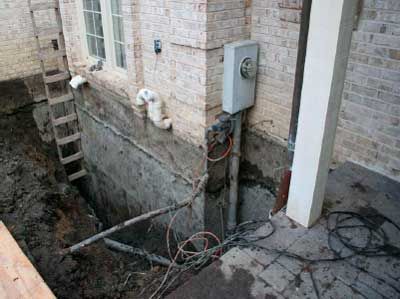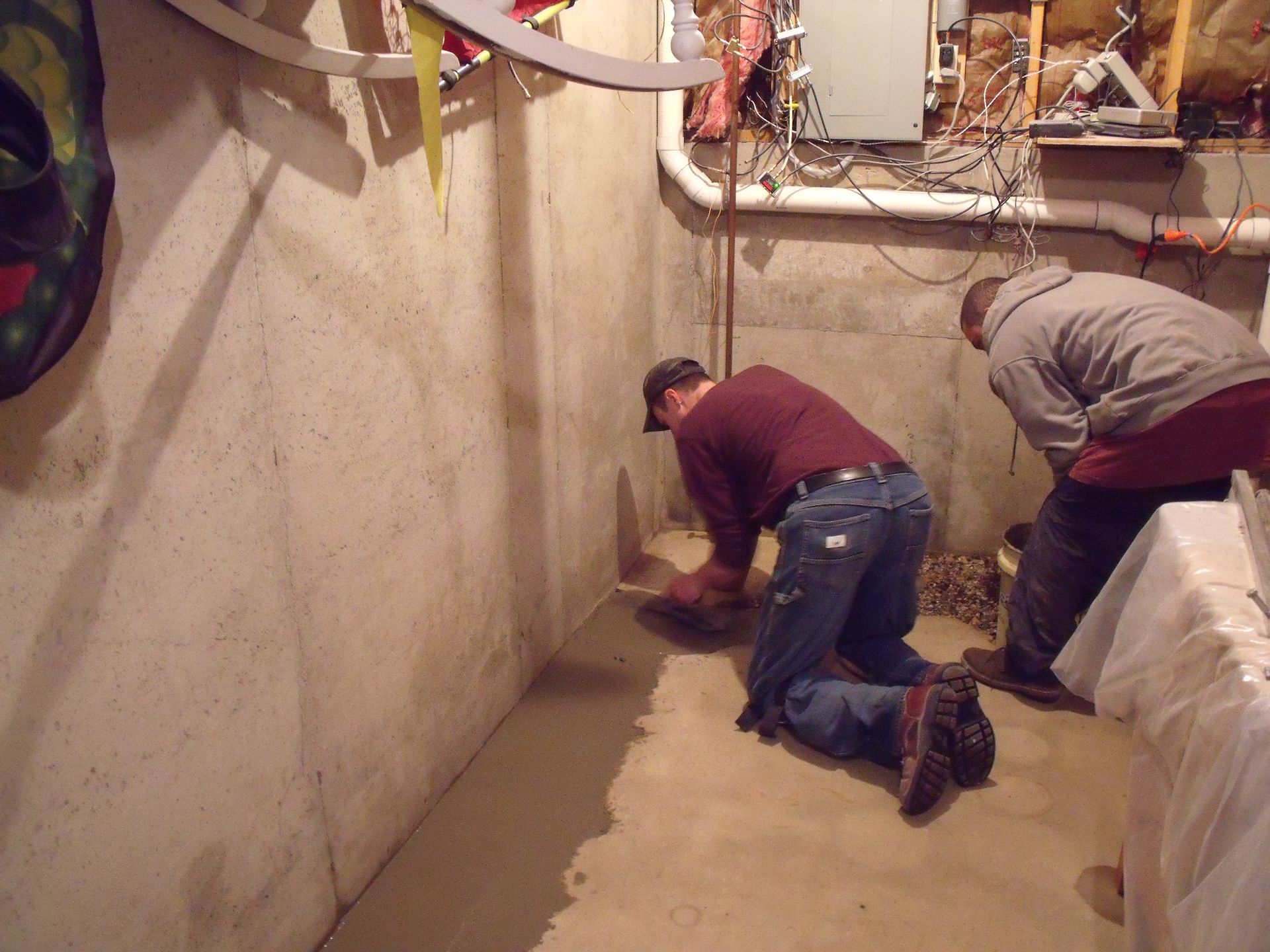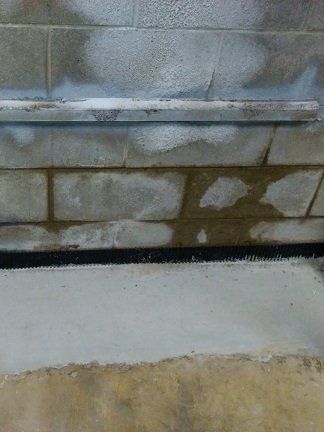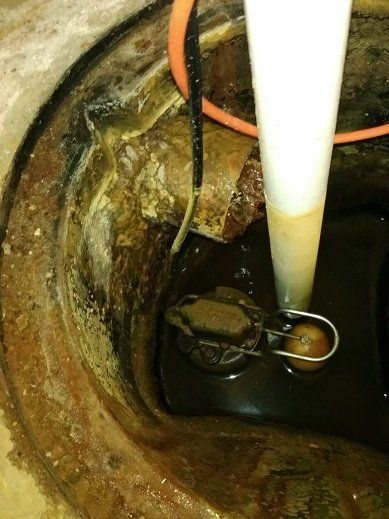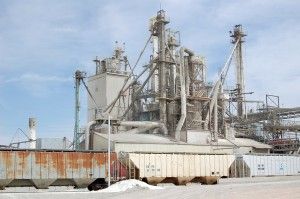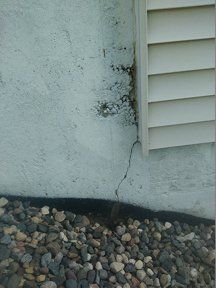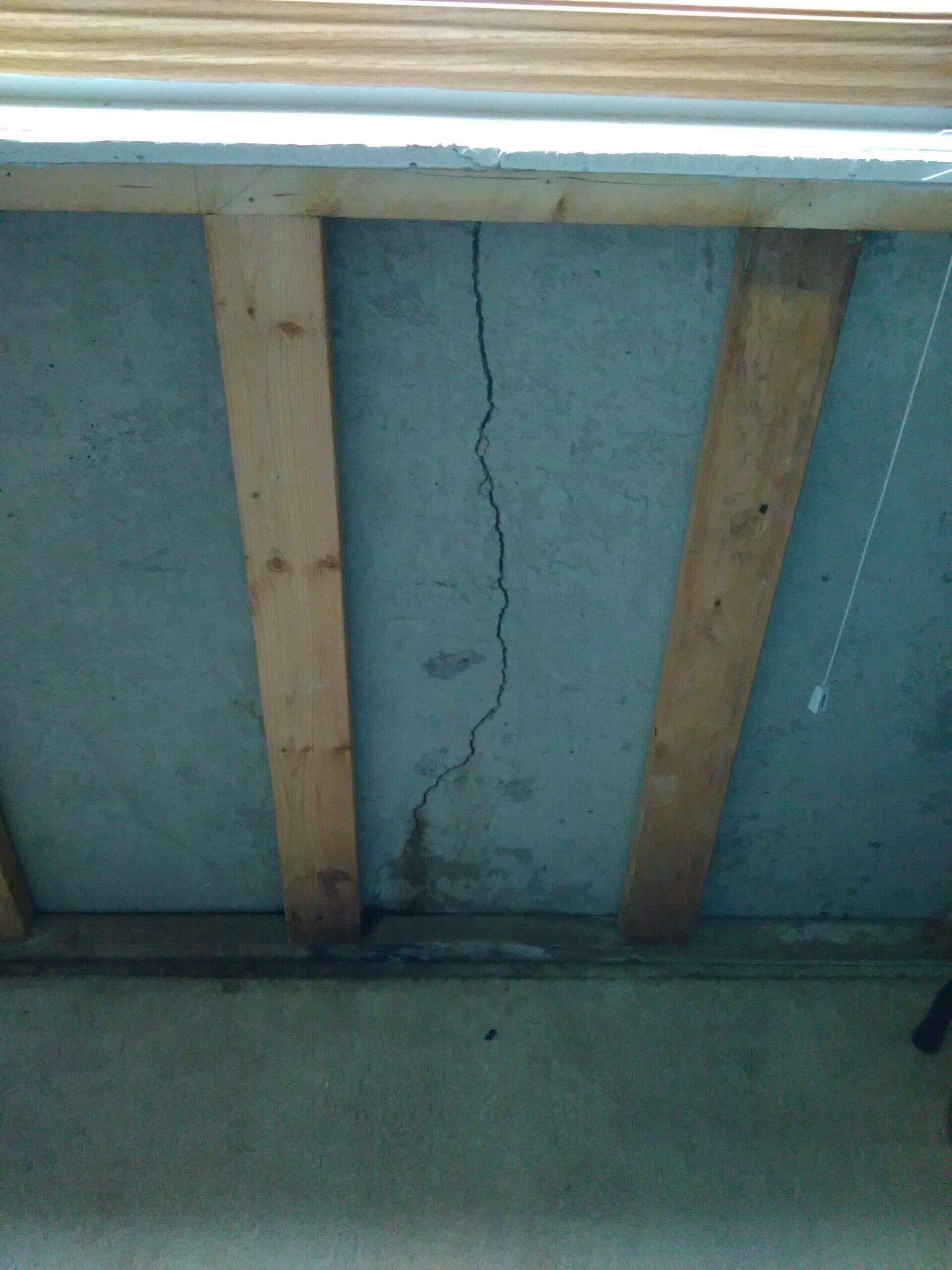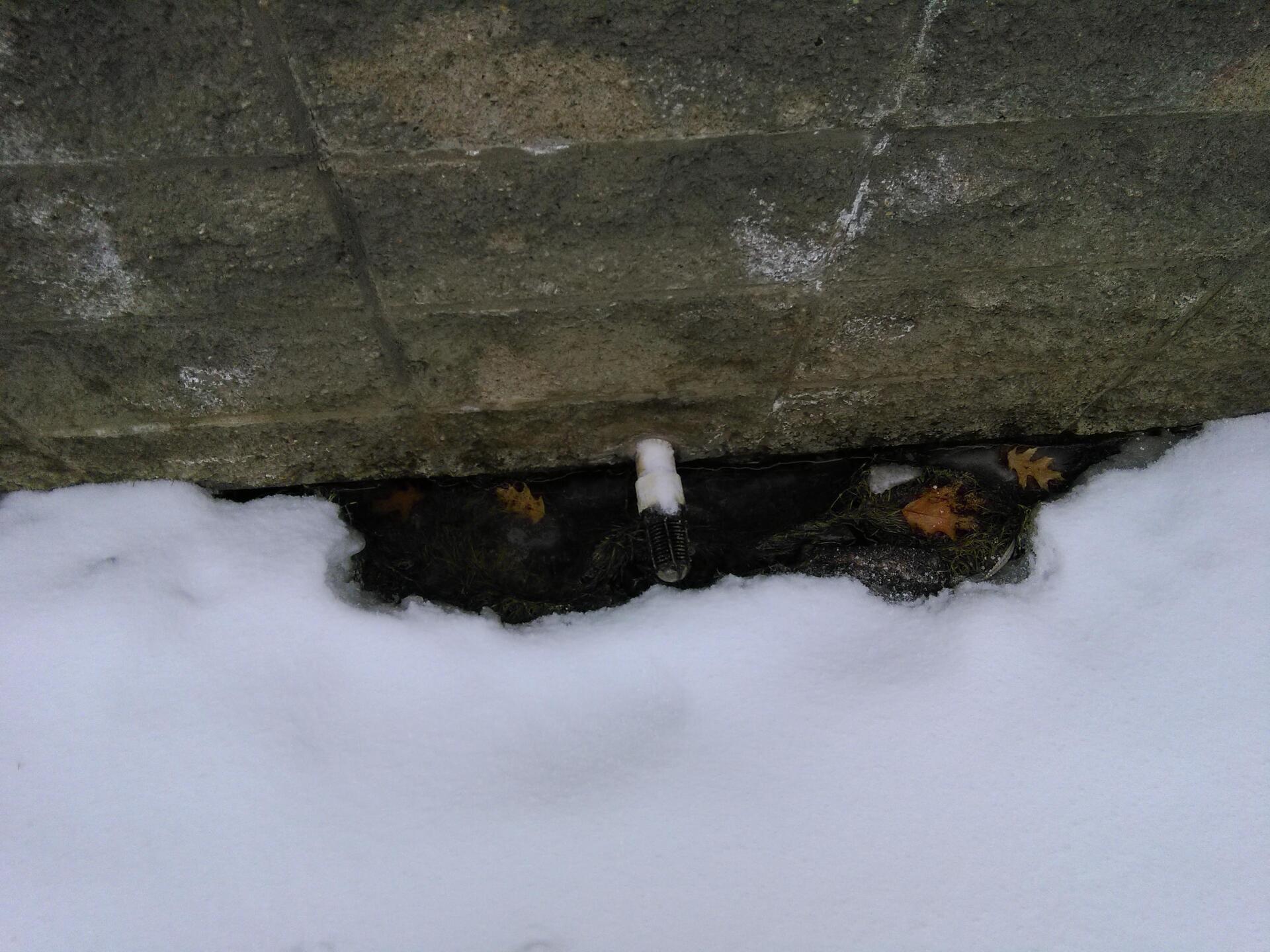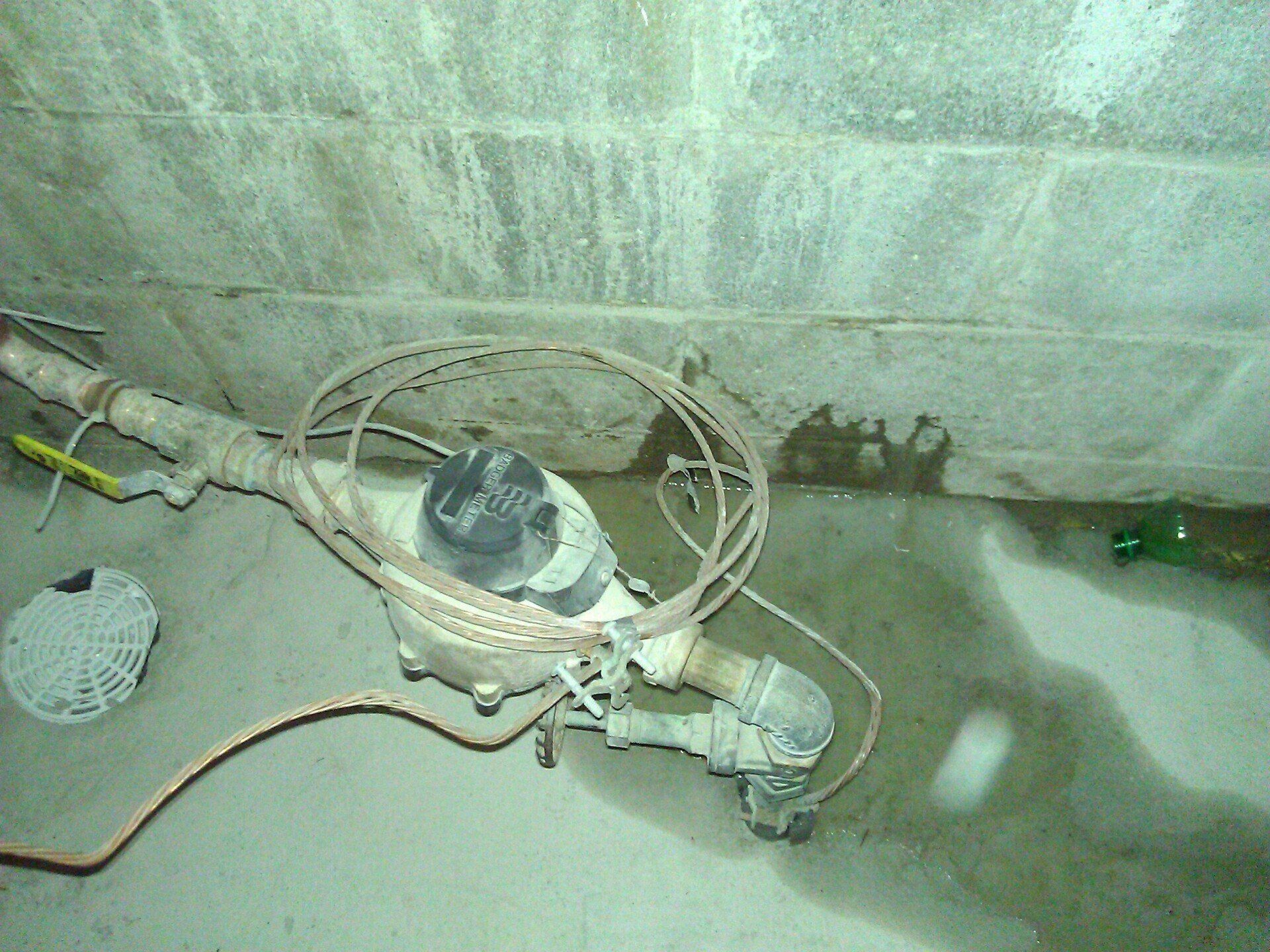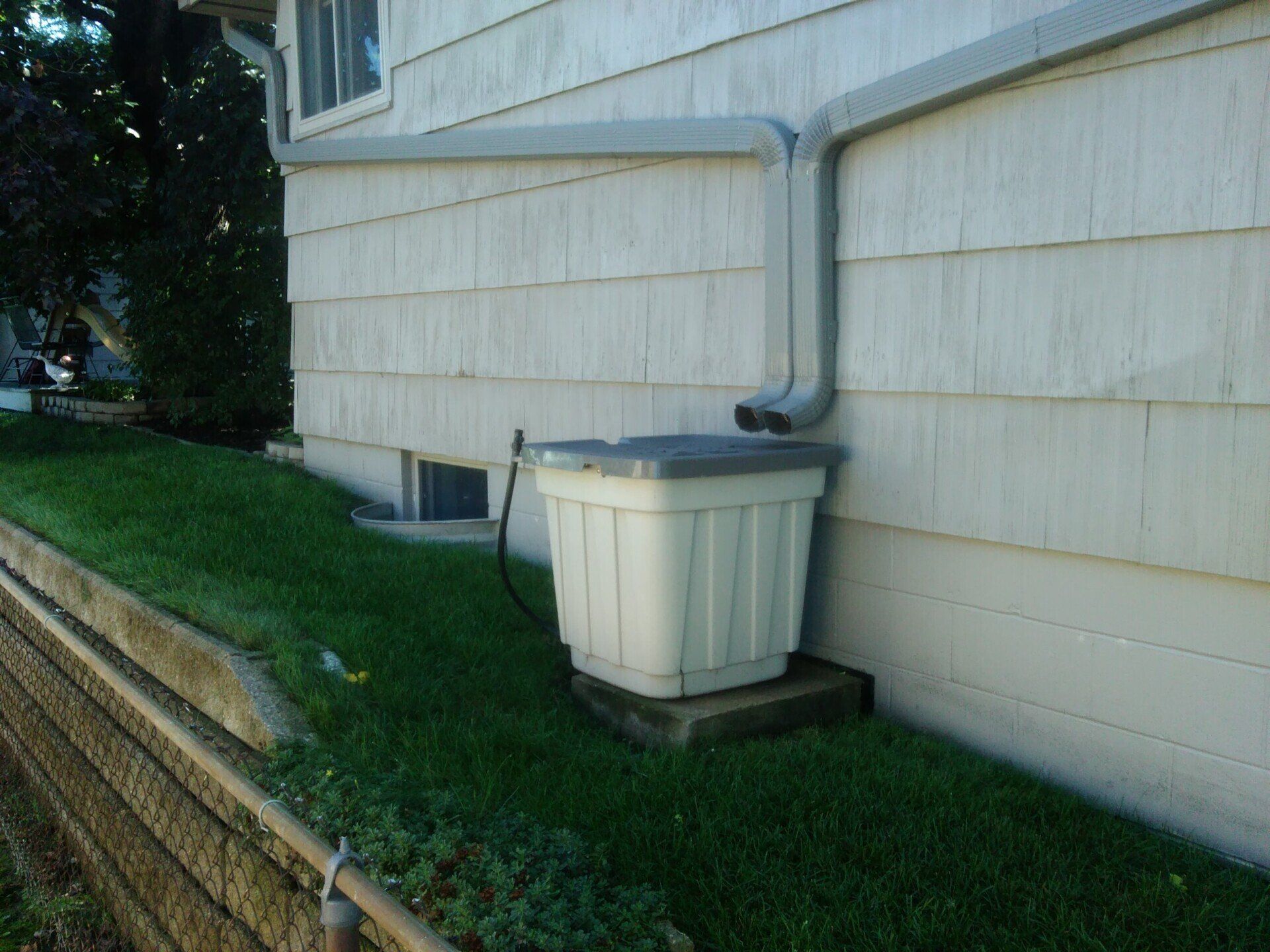This is a common issue we see with poured foundations, a crack has developed from the corner of the vent (a stress point), this will extend all the way down to the basement floor. Warm air from the vent will heat snow and ice in the winter, saturating the ground which freezes and expands, pushing the foundation until it cracks while also allowing moisture to go through the crack and creating a wet basement. This home has a working drain tile system but water is moving through the wall above the floor bypassing the drain tile system.
We patched the upper portion of the crack and sealed below grade with bentonite injections on the outside for Real Waterproofing. The customer also had the option for us to staple the wall crack from the inside with Fortress Carbon Fiber Pins and epoxy, this would stabilize the crack and prevent it from further expansion.

